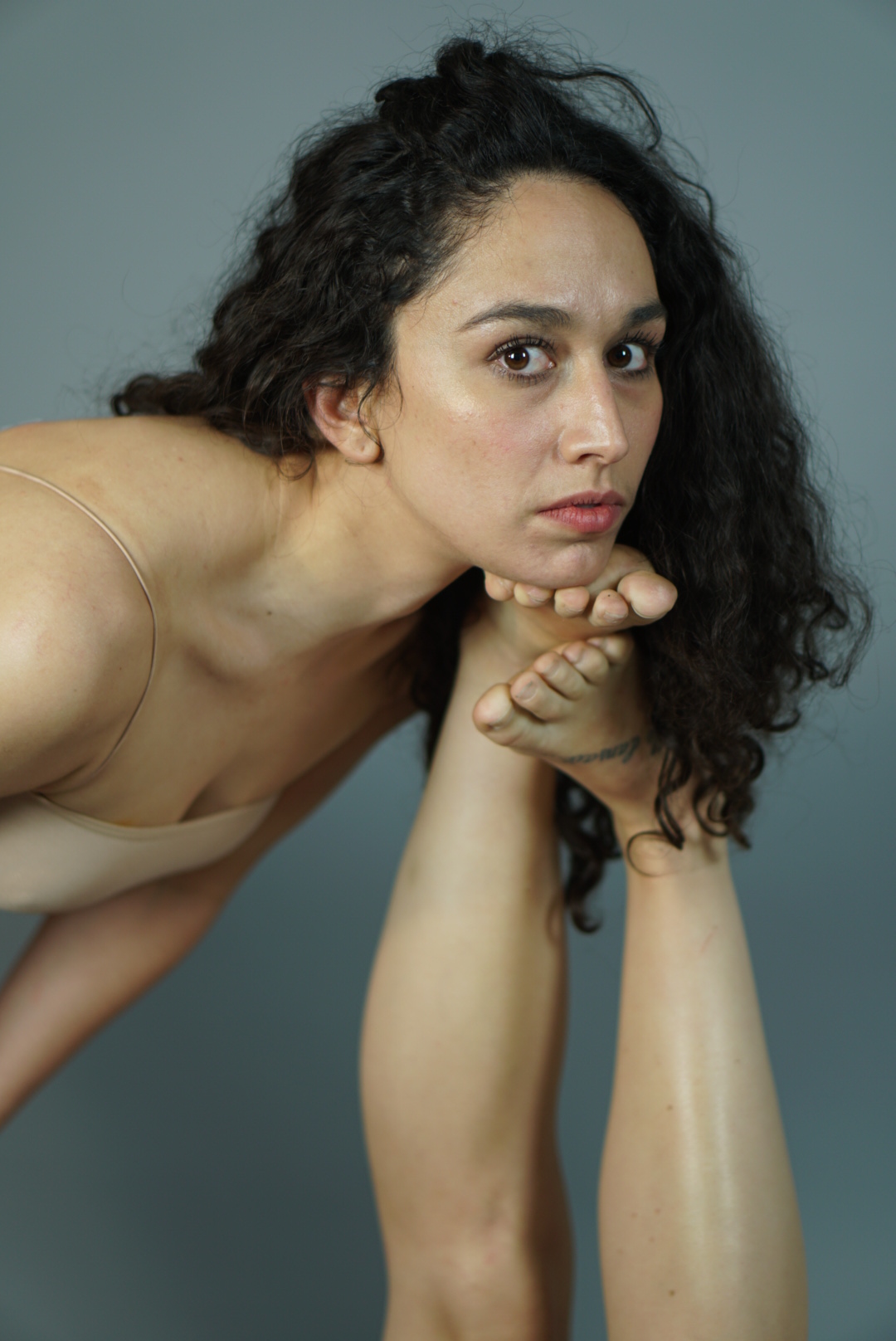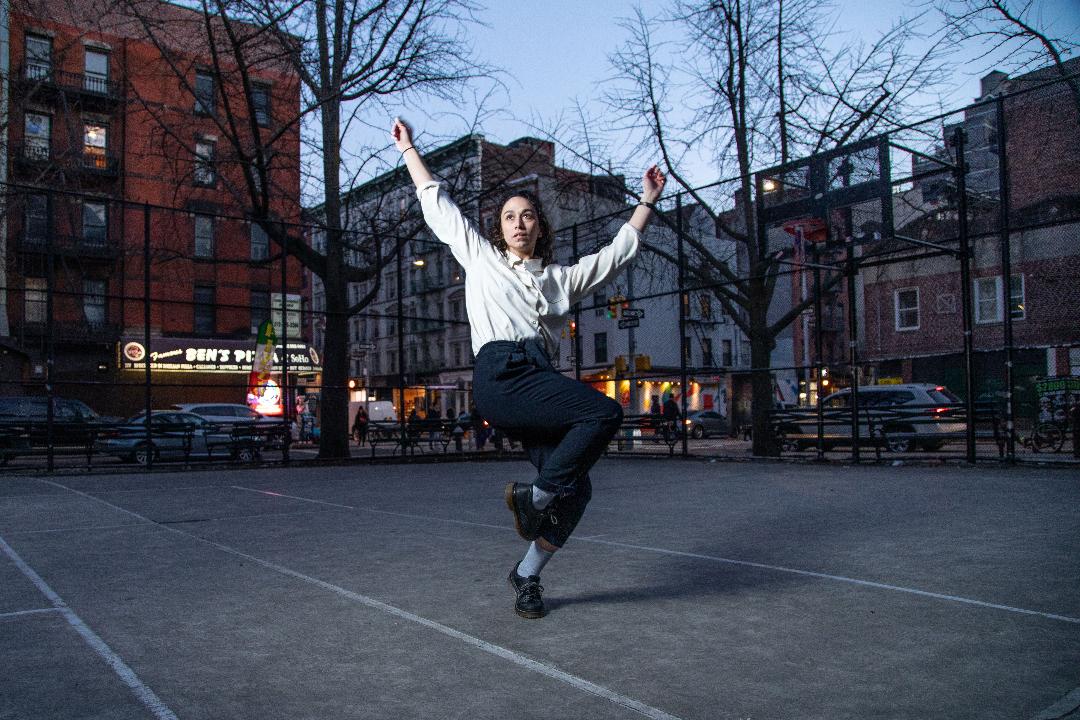Words by Katie Hagan.
‘At one point I had eight jobs’ is a statement pretty much every freelancer can relate to. It’s a piece of insight divulged by choreographer and Trinity Laban MFA graduate, Gianna Burright, who as well as being a dance artist, is one half of GBworks, a new venture she has embarked on with fellow dancer, choreographer and Laban alumnus, Gwynne Bilski.
“It’s tough work being an artist right now. It’s hard enough to get funding and even harder to get something so simple such as good video footage!”
Whilst I mill over the slightly bizarre irony that dancers need video footage to be granted funding — in doing so funding will enable them to pay for a videographer (?!) — Gianna, fresh-faced and intuitive, continues: “Applying for funding is a job in itself, and often we artists don’t get a lot of support when it comes to applications. To get jobs we have to have footage — your work has to be performed. But if no one is giving us opportunities, then how are we supposed to get there?”
“It’s one of the reasons why Gwynne and I started GBworks. As well as taking a separate triple bill to Fringe this year, we also produced Rising Tides, a platform where we, GBworks, support the work of upcoming artists by providing them space to perform.”
“A while back I was fortunate enough to be one of six artists selected to be a part of LA Contemporary Dance Company’s first ever Choreography Lab, a programme facilitated by Genevieve Carson and Rebecca Lemme. I was provided with dancers, space and mentors for a week, with the opportunity to create. As well as taking the opportunity to develop my practice, the experience opened my mind further to what GBworks and our platform of Rising Tides could be. Work thrives in a collective environment, where people are growing together. Without it, work comes across as isolative and isolating, which isn’t necessarily healthy.”
Speaking of America, Gianna is currently based in California. We talk over FaceTime. Here in the UK, it is at the borders of night; in California it has just passed lunchtime and sunlight beams into the space where she is sitting.
Gianna picks up where she left off: “There’s a big shift in the dance world right now. What used to work previously is now not necessarily fitting the new generation, and dance has to adapt to that. What artists used to find supportive is now becoming obsolete. With this in mind, dance must step up and ask itself what is important.”
I can tell by the way Gianna articulates her arms and hands that creating opportunities for dancers and creators is precious to her. Dance needs individuals like this. But equally, isn’t it also about the curation process being open and receptive to change?
“Dance is a very broad art form, yet it is hard to get that truly represented. It is even more difficult for non-dancers to see dance in its entirety and embrace what is ‘different’. Within the curation of dance we are struggling because we are, to an extent, providing opportunities to see a certain style. People go to an Italian restaurant because they know what they are going to get. In dance, we’re offering a select few things from people who have outstanding reputations. The curation of dance often isn’t showcasing the broadness of the work that is out there.”

Clearly the dance curatorial process still has some way to go. Gianna explains she and Gwynne want to create a ‘work in progress’ night, to provide a space for dancers to exhibit whatever they are working on. Six artists for instance show their work, which is followed by feedback and a Q&A. Then a few months later, the same artists are invited back to show their final piece.
Ultimately GBworks forms a community of artists in which they have a space to perform at no charge and have their work written about and documented. Gone are the biblical length applications, instead it’s just about getting in touch. At the end, artists have footage of their final work and can forge connections with people they may never have met. Who knows, they may even bond over the frustrating marginalisation of feminine voices and might make a work about it someday.
“Women are a force to be reckoned with.” I quake (in a good way) as Gianna says this. “We are always good enough, and that is what we aim to achieve with GBworks. Providing a space for feminine identities to be celebrated and treasured seems very important to us right now.”
“I’m currently teaching my musical theatre students Head Over Heels, a Broadway phenomenon which, among other things, presents a love story between two women and explores the transgression of gender roles, where a kiss becomes a political act.” Les Mis what?
Whilst it might seem at odds for a contemporary dancer to be teaching musical theatre (Gianna says it’s the most creative form of ‘dance math’ to her and really challenges her story-telling skills), I think there is actually something quite commendable in mainstream dance taking a long hard look at itself; riding with the times as opposed to battling against it. And Gianna believes in that with conviction.
Our digression to musical theatre takes us back to Gianna’s artistic practice. “My solo and collaborative practices are so different. My collaborative is guided by this mantra: ‘To move is to surrender to a sense of being lost and then finding the ground again. To choreograph is to invite the ability to navigate new relationships to language, understanding human relations and space to further question and evaluate perceptions.’ We have to change perspectives when collaborating, between the idiosyncratic and collective understanding.”
“I also apply lots of deep listening practices to my work — even when I teach young people! This approach helps us find ways to listen to our bodies. I am deeply inspired by octopuses as they have access to all five senses. I think that is so special. We must listen with our entire body, not just our ears.”
“I always wonder what the world would be like if we knew our bodies a little more. Understanding our bodies and having literacy in our body language. Our movement is just as crucial as speaking and articulating ourselves verbally.”
I end our conversation with the indispensable question: ‘Who inspires you?’ For such a cliched question artists will always say something different.

“There are so many. Emma Watson, Genevieve Carson, Cleo Wade, Rebecca Solnit, Sonya Tayeh, Crystal Pite, Trisha Brown. Bobbi Jene Smith is my icon. The way she moves is incredible; she uses her body to cross borders. But it’s her ability to crack her heart open that I love. I’d love to work for her someday.”
Header image: Joe Delahunty. Image (right): Wholesale Creativ.
To discover more about Gianna, you can follow her on Insta.
